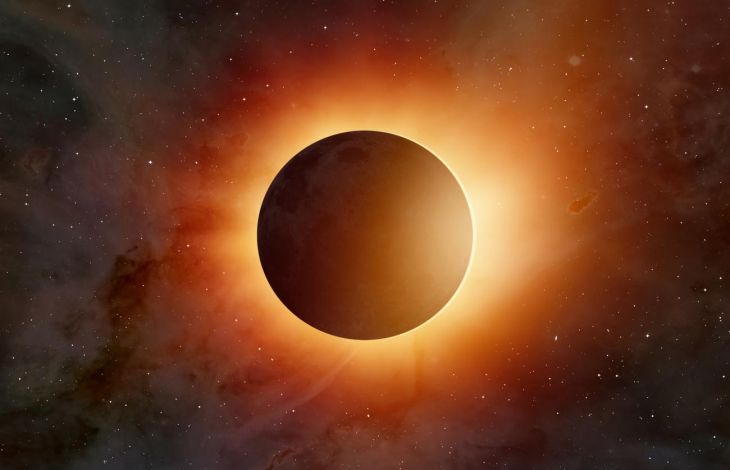- Name
- Johns Hopkins Media Relations
- [email protected]
- Office phone
- 443-997-9009
On Monday, April 8, the United States will experience its second total solar eclipse in seven years and its last until 2044. More than 30 million people live in the path of totality, where the moon will completely block the sun as it sweeps up from Texas and moves northeasterly into Maine. Millions more are expected to travel to experience totality.

April 8
Solar eclipse viewing party
Join the JHU community on the Beach to view the solar eclipse and learn about the significance of this rare phenomenon; eclipse glasses provided
Four experts from Johns Hopkins University held a virtual briefing on Friday to discuss the science of eclipses and what viewers can expect and should look for during the upcoming celestial event.
Johns Hopkins University Provost Ray Jayawardhana began the conversation by sharing his own compelling in-person experience viewing a total solar eclipse in the Altai Mountains of Western Mongolia in 2008—one of three total eclipses he has witnessed to date. An astrophysicist and professor in the Department of Physics and Astronomy who studies the diversity, origins, and evolution of planetary systems using the largest telescopes on the ground and in space, Jayawardhana described his viewing of the 2008 eclipse as both scientifically significant and spiritually moving.
"The dual sights of the eclipse in the sky and rituals on the ground were mesmerizing and reminded me of the deep and enduring links between the celestial and the human realms," he said, with a photo of the most recent eclipse in 2017 visible over his shoulder on the wall in his office. "It's worth making the effort to witness a total solar eclipse in person in all its glory (and do remember to be safe when you do so). No photograph or even a livestream compares to the real thing. The fleeting spectacle of totality will last just a couple of minutes but the memories will last a lifetime."
Video credit: Johns Hopkins University
Some takeaways from the discussion:
Bill Blair, an astrophysicist and research professor in the Department of Physics and Astronomy, used images to explain how an eclipse works and why total eclipses are relatively rare. Earth's moon is roughly a quarter the size of the Earth and its orbit is about 240,000 miles away, the equivalent of roughly 30 Earth diameters. "There doesn't have to be much misalignment for that shadow to just go above or below the earth instead of striking someplace on the earth," Blair said.
Astrophysicist and Department of Physics and Astronomy Assistant Professor Meredith MacGregor discussed how Monday's eclipse coincides with solar maximum, a period when the sun's magnetic activity is at peak as part of an 11-year cycle solar cycle in which activity waxes and wanes. Sunspots are more visible during this period and for those in the path of totality (providing there are no clouds), the corona—the streaks of light flaring out from around the moon when it completely blocks the solar disc—will be "more spectacular" making "this eclipse really special."
Planetary geophysicist Kevin Lewis, an associate professor in the Department of Earth and Planetary Sciences who works with the Mars Curiosity Rover, explained how any would-be Martians don't experience total eclipses because its moon, Phobos, is too small and too close to totally block the sun. "It's really special that on our planet, the sun and the moon appear exactly the same size or nearly so in the sky," he said. But since our moon is moving away from us a few centimeters each year, "total eclipses will probably only be seen on our planet for a few hundred million more years."
Some things to look out for if you are in a totality zone (and, again, if the weather cooperates) is the so-called diamond ring effect, which appears right before and right after totality as a dazzling diamond like flash of light. (It should be viewed through eclipse viewing glasses, as it not safe look at the eclipse until totality occurs.) Also, during totality when the sky is dark you might be able to see Jupiter above and to the left of the moon and Venus to the lower right. These planets are not visible in the regular daytime sky.







